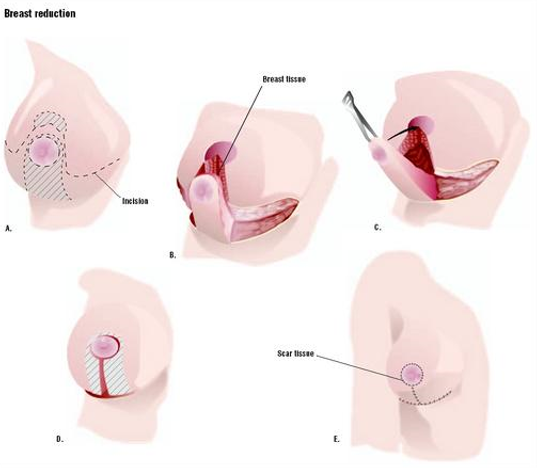From severe back problems to cosmetic or aesthetic reasons, there are different reasons why a woman goes in for breast reduction surgery. This surgery, also known as reduction mammoplasty is the surgical reshaping of the breast to make it smaller. Your doctor will, in course of the surgery remove excess fat, glandular tissue, and skin to reduce breast size. We take a deep dive into the types of breast reduction surgeries and how they are done.

The types of breast reduction procedures include minimally invasive surgery or open surgery. The most common surgeries involve:
Free nipple graft.
Liposuction.
Pedicle method.
Anchor incision.
LeJour incision.
The procedure
Before the procedure begins, the doctor will check your health status. If everything is ideal, they will give you a general anaesthetic. The nipple remains attached to its blood and nerve unless the doctor performs a ‘free nipple graft’. During the surgery, excess skin, fat and glandular tissue is removed. Sometimes, the doctor will use liposuction to help remove excess fat. The doctor puts stitches deep inside the breast tissue to add support. The incisions on the skin are closed up.
What to expect immediately after surgery
After breast reduction surgery, you may suffer from a series of issues. The doctor will normally leave a drainage tube in the wound to help prevent fluid build-up. Even though this tube is in place you may feel pain and discomfort. There will be bruising and swelling, especially around the area of the incision. You may feel numbness around the area. However, the best part is that the results of the breast reduction surgery will be immediately visible.
Potential complications with breast reduction surgery
All surgery carries some degree of risk. Before opting for Reduction Mammoplasty surgery, your doctor will brief you about the potential risks involved. Major risks include less sensation in the nipples or breasts, uneven shaped breasts or nipples, scars on the breasts, breastfeeding problems, fat necrosis, and general surgery allergic reactions. Another issue could be the reduced effectiveness of breast cancer screening, as an implant may hide breast tissue (and tumours) during a mammogram.
Self-care after breast reduction surgery
Your doctor will provide you with detailed post-operative care instructions on how to care for your surgical site(s) following the breast reduction surgery. You will also be instructed on the medications to apply or take orally to aid healing and reduce the risk of infection. The doctor will also address specific concerns related to your post-op situation or to your general health. It is ideal to draw a follow-up schedule with your healthcare provider post the operation.
Alternatives to breast reduction surgery
There are alternatives to breast reduction surgeries too. The first step will be to reduce your weight if you are obese. If you are opting for breast reduction surgery because of cosmetic or aesthetic reasons, a session with a counsellor or a psychologist may help. Think about the pros and cons before going in for breast reduction surgery.
For Enquiries and Online Appointments
For more detailed information about Breast Reduction Surgery, please send us a message today.

